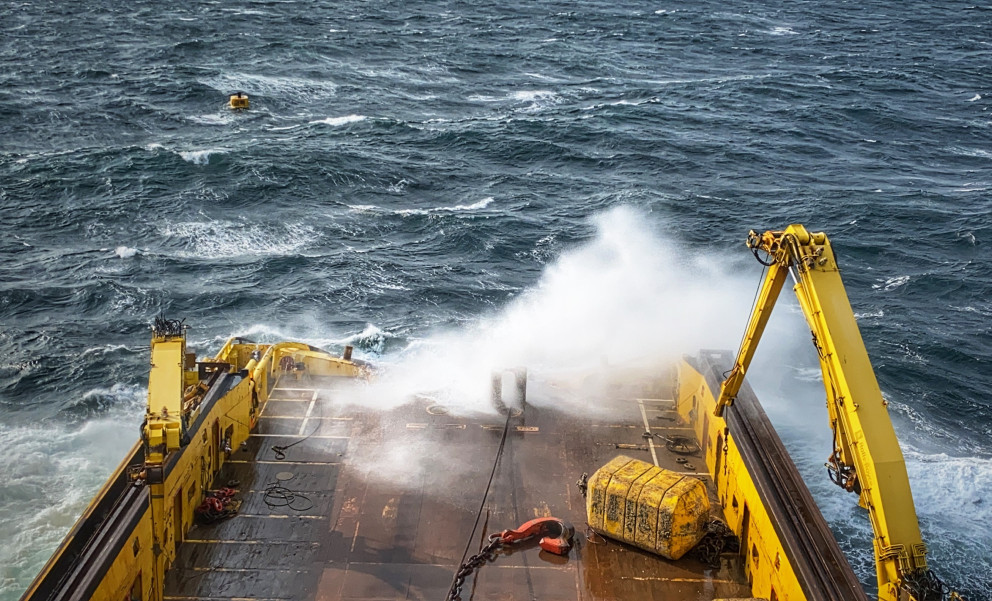Many of these accidents are fatal. This is a part of the reason why fishing is ranked one of the most dangerous jobs in Norway.
Every year, the Norwegiain Maritime Authority (NMA) receives reports about accidents including workers falling overboard. This week's "Lessons learned" describes an incident that led to a fall overboard and injuries, but no fatalities.
The incident
A relatively big fishing boat was about to let out the trawl in the Arctic Ocean when the accident happened. It was dark, there was low visibility and a moderate breeze in the area. When letting out the trawl one person fell overboard, into the slip and in the sea. The height of the fall is estimated to be 3 to 4 metres. Quickly (in about 2 minutes), the crew managed to grab him and bring him back on board. By then, the fisher was beaten and cold. Following a conversation with Radio Medico1, a rescue helicopter was ordered. The injured person was brought to the hospital, where broken ribs and a damaged spleen were identified.
No one witnessed the actual incident, but the fisher believes he was standing in a loop with a wire pulling him overboard. The fisher was wearing a floatation suit which probably helped save his life.
Risk assessment
Everyone on deck had performoed an assessment of the risks involved in working on deck.
The risks of trawling and work on deck have been repeate on board on many occasions. The crew have dicussed the various risks that may arise, and they regard this the most risk-related area of work on board. They say that the focus on this risk has probably led to the small number of accidents in this area.
Investigation of fatal accidents caused by falls overboard
Over the last few years, the Norwegian Safety Investigation Authority has investigated two fatal accidents caused by falls overboard, the Sjøbas JR and the M/S Fiskenes.
According to them, the key lessons learned from these accidents were measures to reduce the risk of being pulled overboard while fishing.
The following safety advice was given to the M/S Fiskenes which is also relevant both for the Sjøbas JR and this week's incident:
- Owners of small smacks and other fishing boats should introduce lasting physical measures to limit the risk of fishers being pulled overboard when fishing. In other words, measures need to be implemented so that the fishers are physically separated from moving ropes and fishing gear.
- The NMA, together with the industry, research and other competent environments, should consider measures to motivate and support fishing vessel owners to implement physical barriers/arrangements to prevent accidents when fishing.
Summary
The injured person was rescued and taken on board quickly. Still, the consequences were injuries and a long period of sick leave. The key question is what can be done to make the job less risky. Are there other ways of performing the work operation? Have sufficiently good routines been implemented around the safe zone? Has it been considered to introduce physical barriers/arrangements to prevent accidents when fishing?
Even if the risks of this work operation had been jointly considered, the incident shows a need for more measures and the importance of continous evaluation of own work routines and procedures to find good solutions to help prevent accidents.
Yrkesfisker.no
On the website Yrkefisker.no you can find important information about legislation, checklists, work to prevent accidents on board and other safety-related information.
FiskRisk:
The program FiskRisk is an aid for uncovering risks related to the various tasks being performed on board your vessel. You will get help to assess the risk and make plans systematically so that you can be prepared and implement measures to prevent unwanted incidents in your work place.
References:
1 http://www.ncmm.no/about-radio-medico-norway
http://www.aibn.no/Sjofart/Rapporter/2013-09

